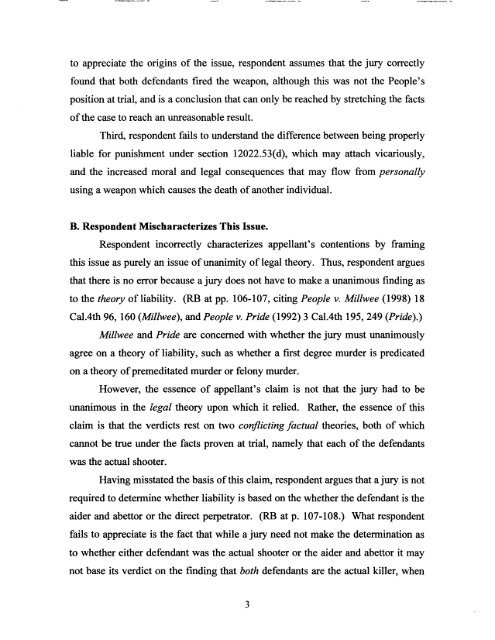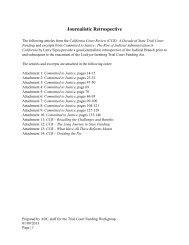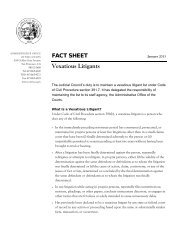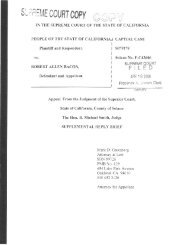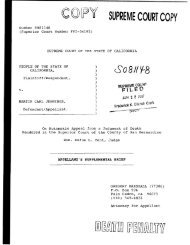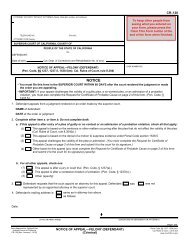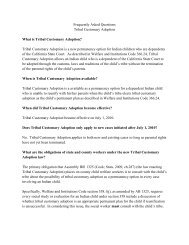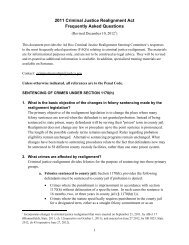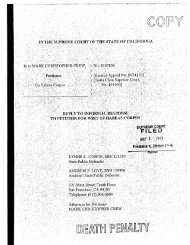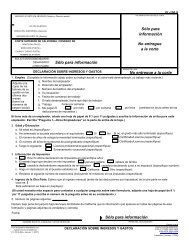Appellant, William Satele, Reply Brief - California Courts - State of ...
Appellant, William Satele, Reply Brief - California Courts - State of ...
Appellant, William Satele, Reply Brief - California Courts - State of ...
Create successful ePaper yourself
Turn your PDF publications into a flip-book with our unique Google optimized e-Paper software.
to appreciate the origins <strong>of</strong> the issue, respondent assumes that the jury correctly<br />
found that both defendants fired the weapon, although this was not the People's<br />
position at trial, and is a conclusion that can only be reached by stretching the facts<br />
<strong>of</strong>the case to reach an unreasonable result.<br />
Third, respondent fails to understand the difference between being properly<br />
liable for punishment under section 12022.53(d), which may attach vicariously,<br />
and the increased moral and legal consequences that may flow from personally<br />
using a weapon which causes the death <strong>of</strong>another individual.<br />
B. Respondent Mischaracterizes This Issue.<br />
Respondent incorrectly characterizes appellant's contentions by framing<br />
this issue as purely an issue <strong>of</strong>unanimity <strong>of</strong>legal theory. Thus, respondent argues<br />
that there is no error because a jury does not have to make a unanimous finding as<br />
to the theory <strong>of</strong> liability. (RB at pp. 106-107, citing People v. Millwee (1998) 18<br />
Ca1.4th 96, 160 (Millwee), and People v. Pride (1992) 3 Cal.4th 195, 249 (Pride).)<br />
Millwee and Pride are concerned with whether the jury must unanimously<br />
agree on a theory <strong>of</strong> liability, such as whether a first degree murder is predicated<br />
on a theory <strong>of</strong>premeditated murder or felony murder.<br />
However, the essence <strong>of</strong> appellant's claim is not that the jury had to be<br />
unanimous in the legal theory upon which it relied. Rather, the essence <strong>of</strong> this<br />
claim is that the verdicts rest on two conflicting factual theories, both <strong>of</strong> which<br />
cannot be true under the facts proven at trial, namely that each <strong>of</strong> the defendants<br />
was the actual shooter.<br />
Having misstated the basis <strong>of</strong>this claim, respondent argues that a jury is not<br />
required to determine whether liability is based on the whether the defendant is the<br />
aider and abettor or the direct perpetrator. (RB at p. 107-108.) What respondent<br />
fails to appreciate is the fact that while a jury need not make the determination as<br />
to whether either defendant was the actual shooter or the aider and abettor it may<br />
not base its verdict on the finding that both defendants are the actual killer, when<br />
3


